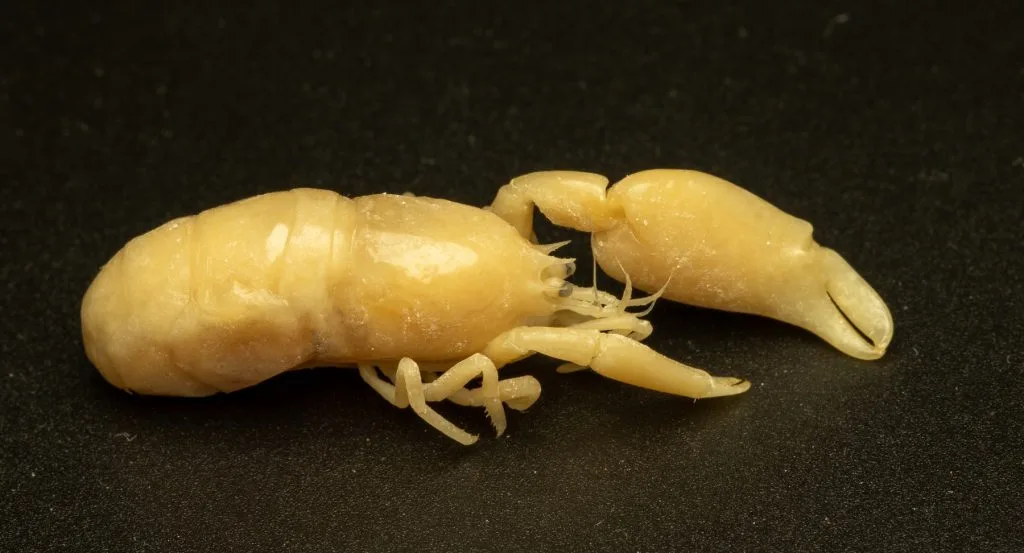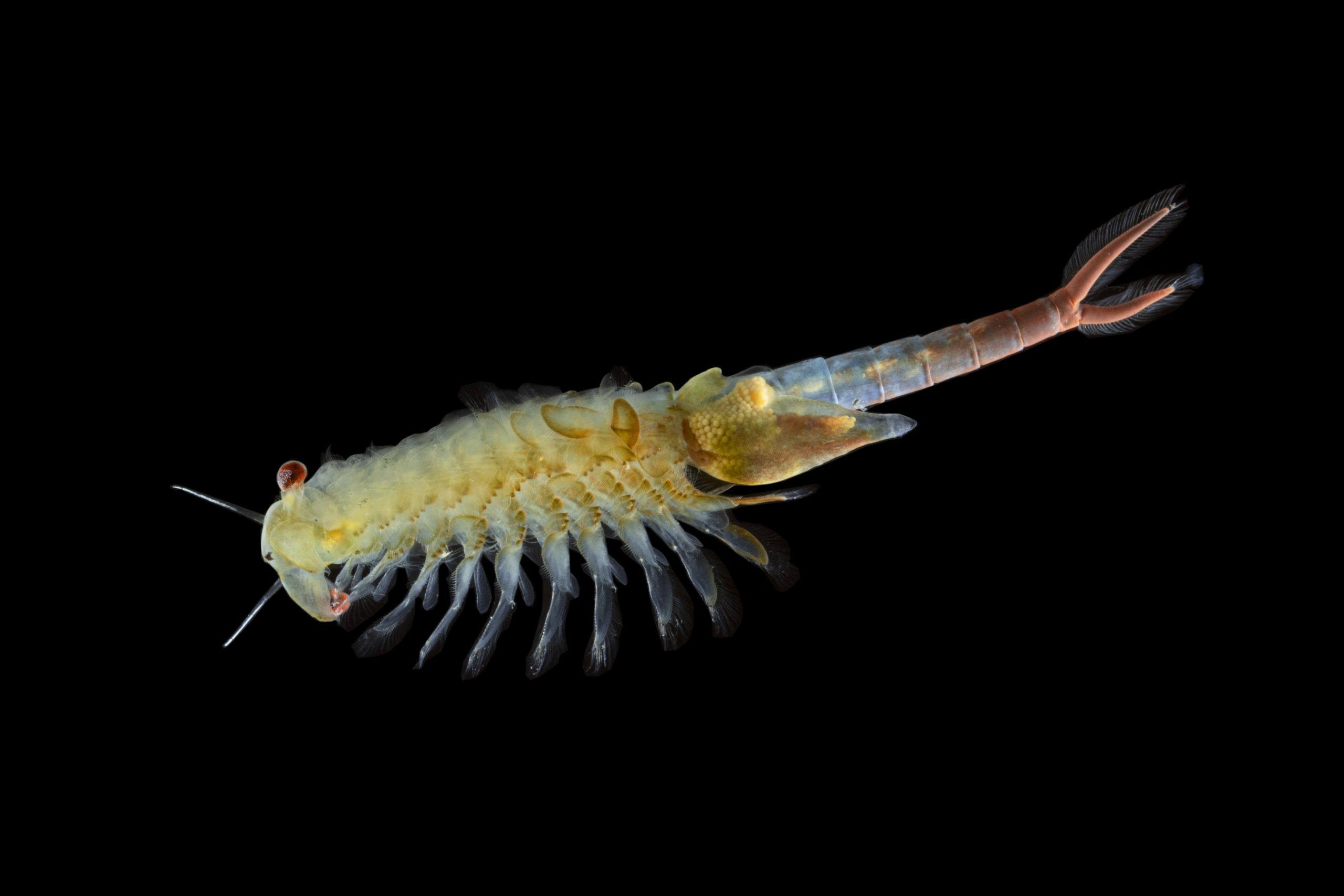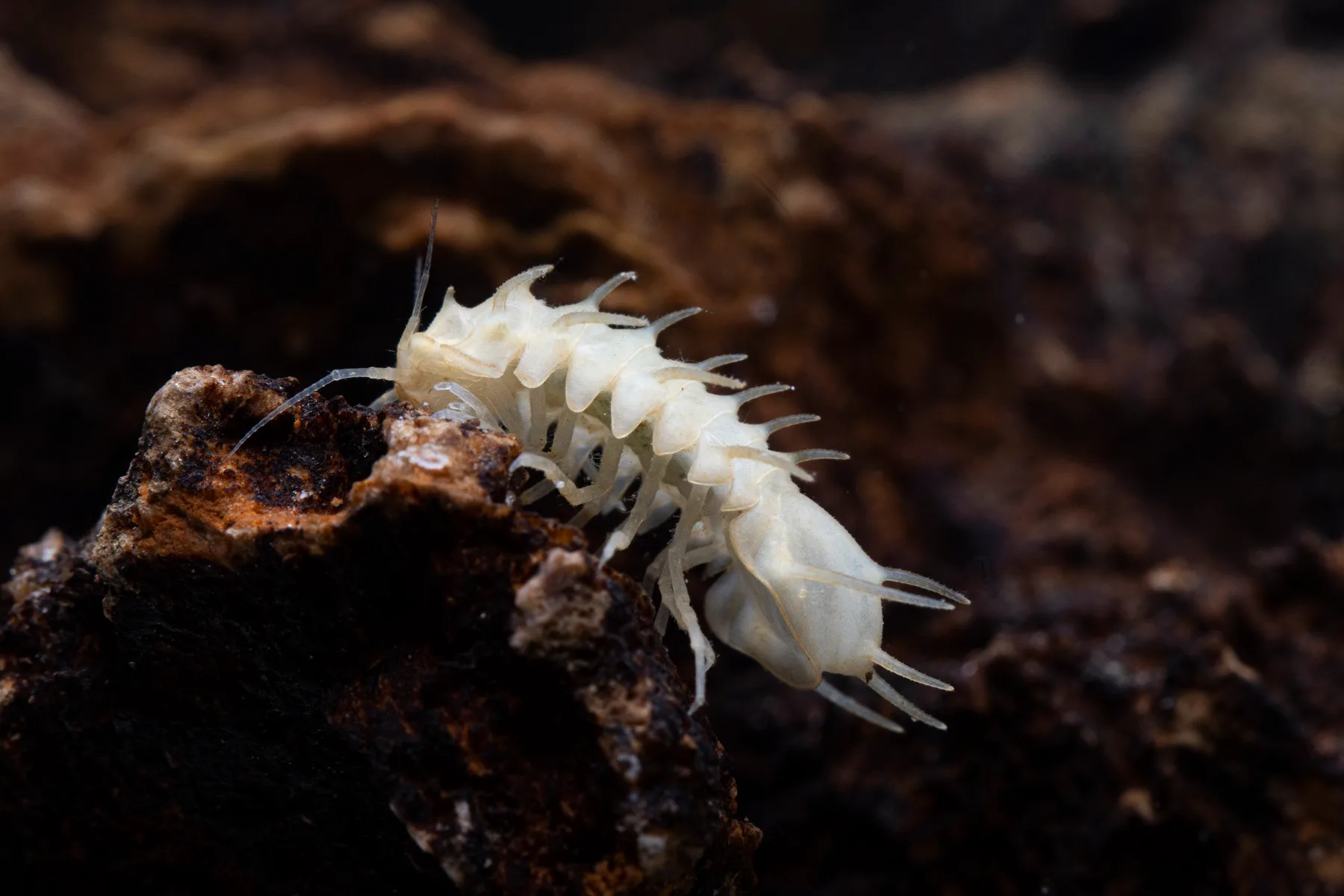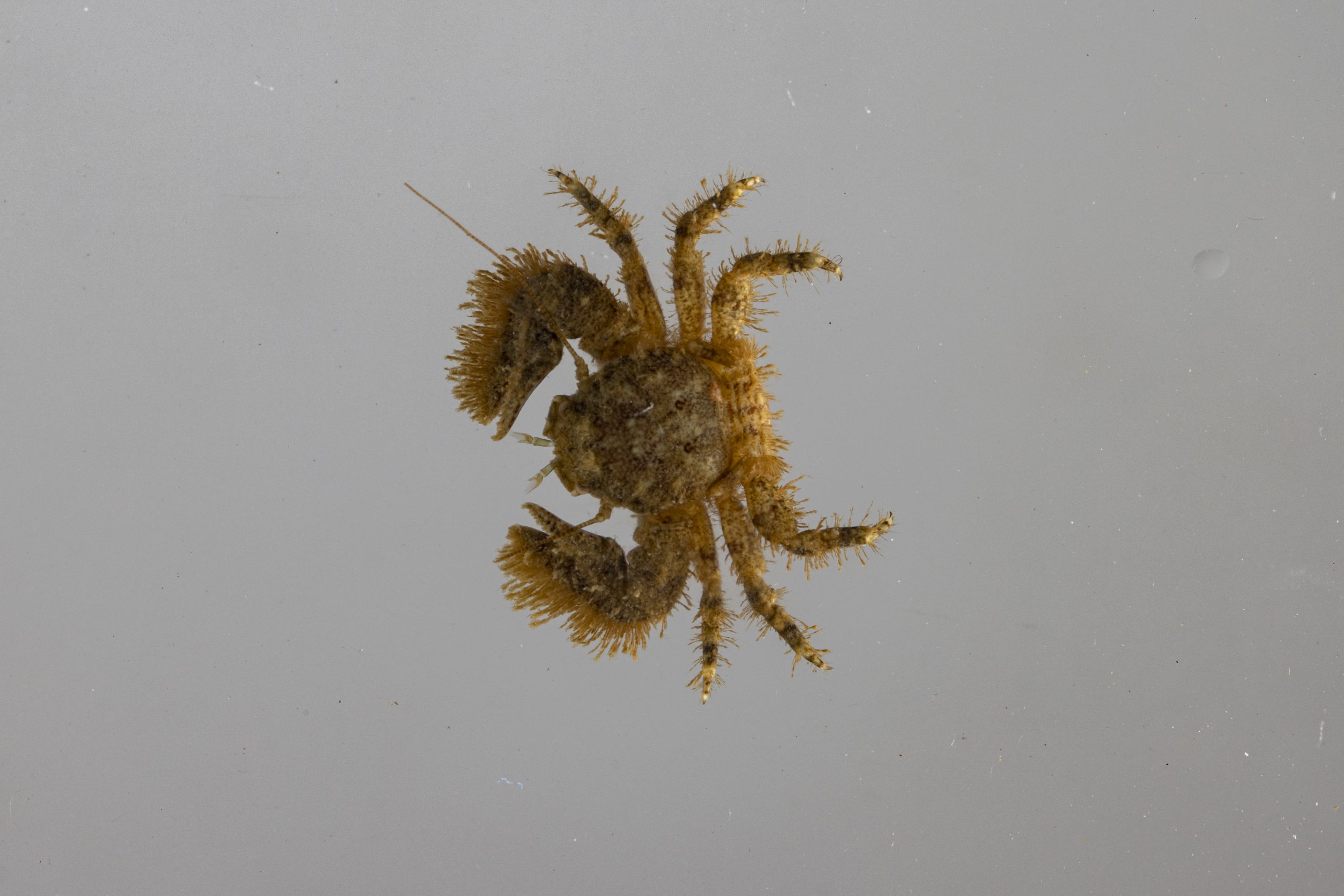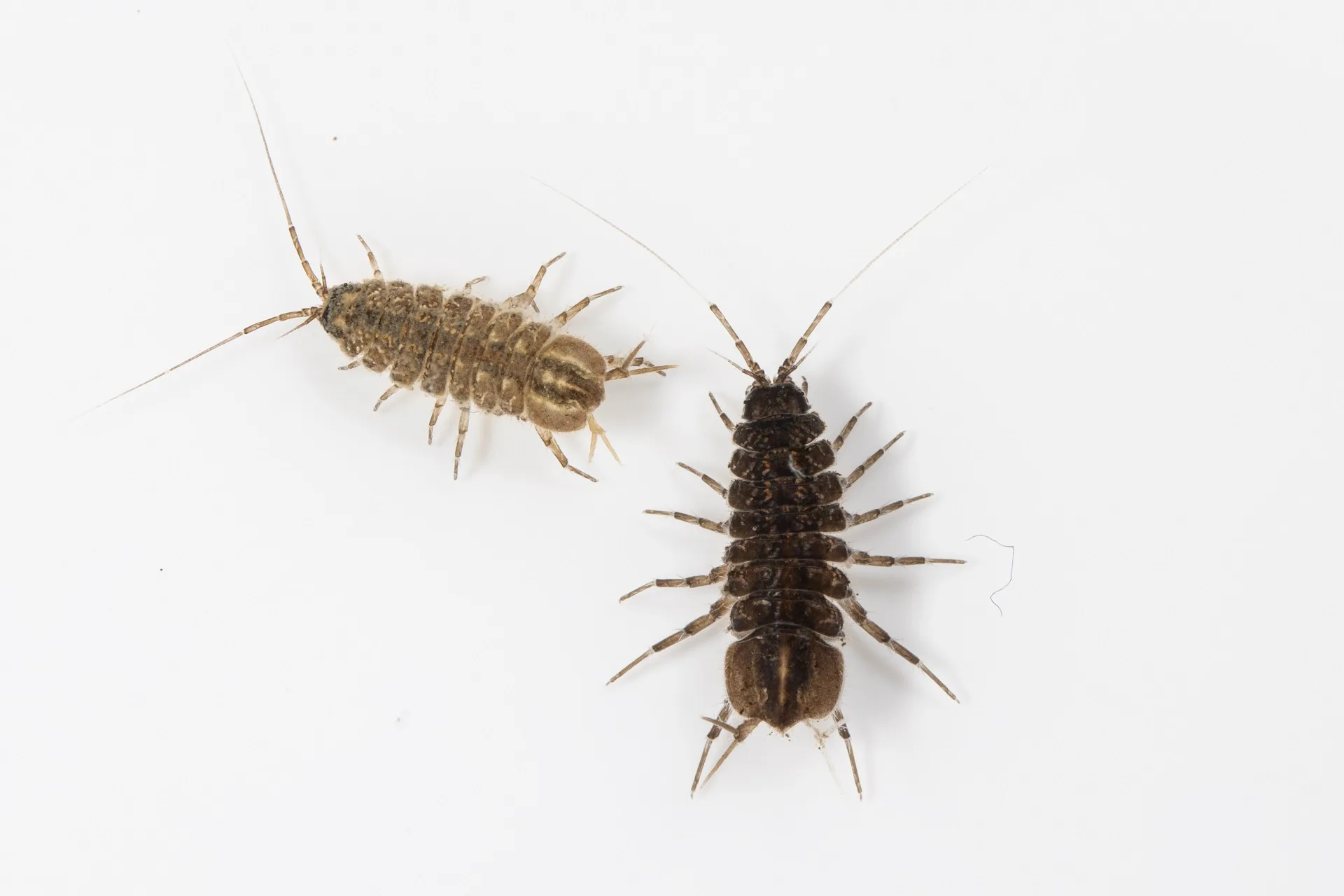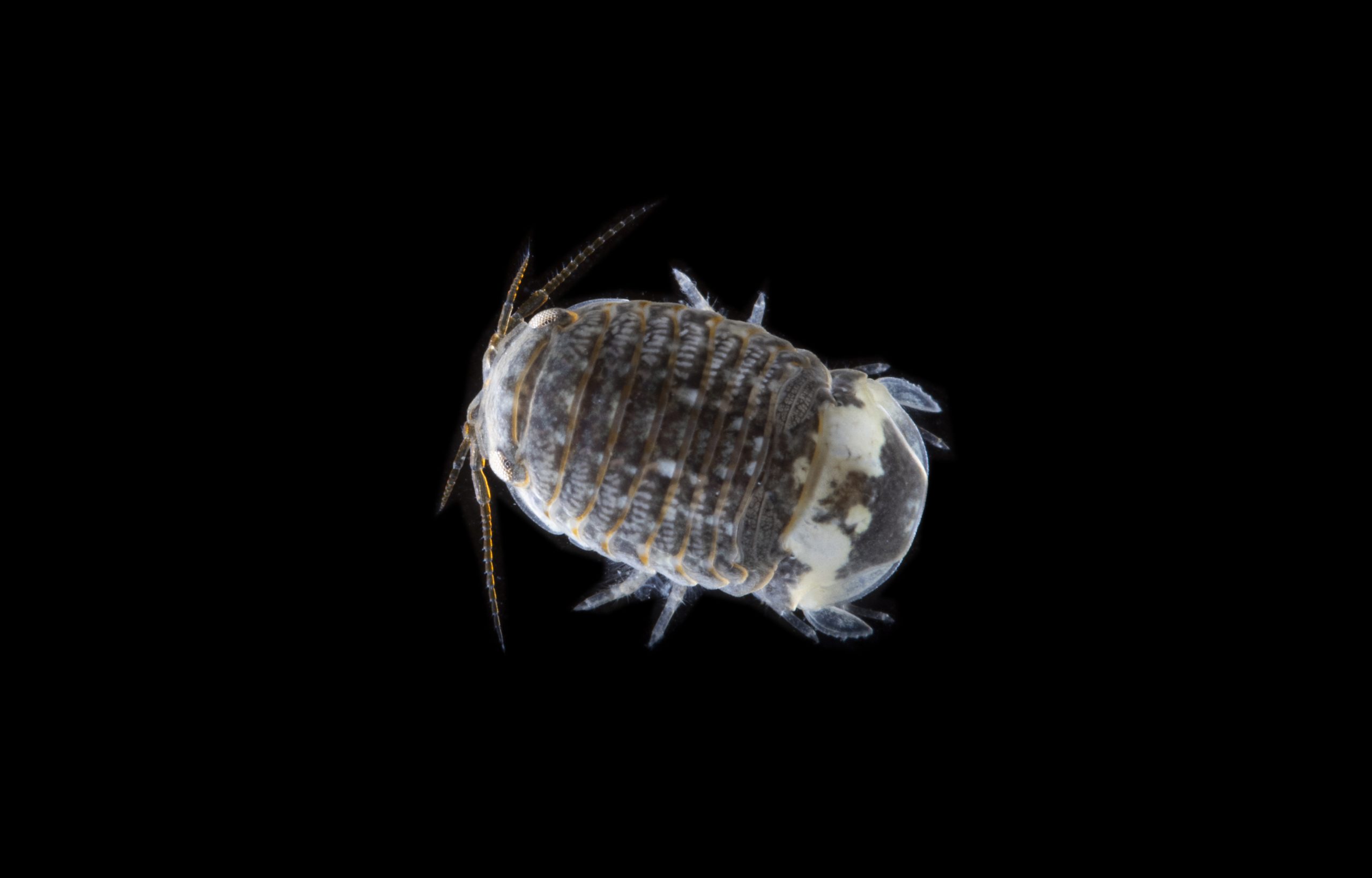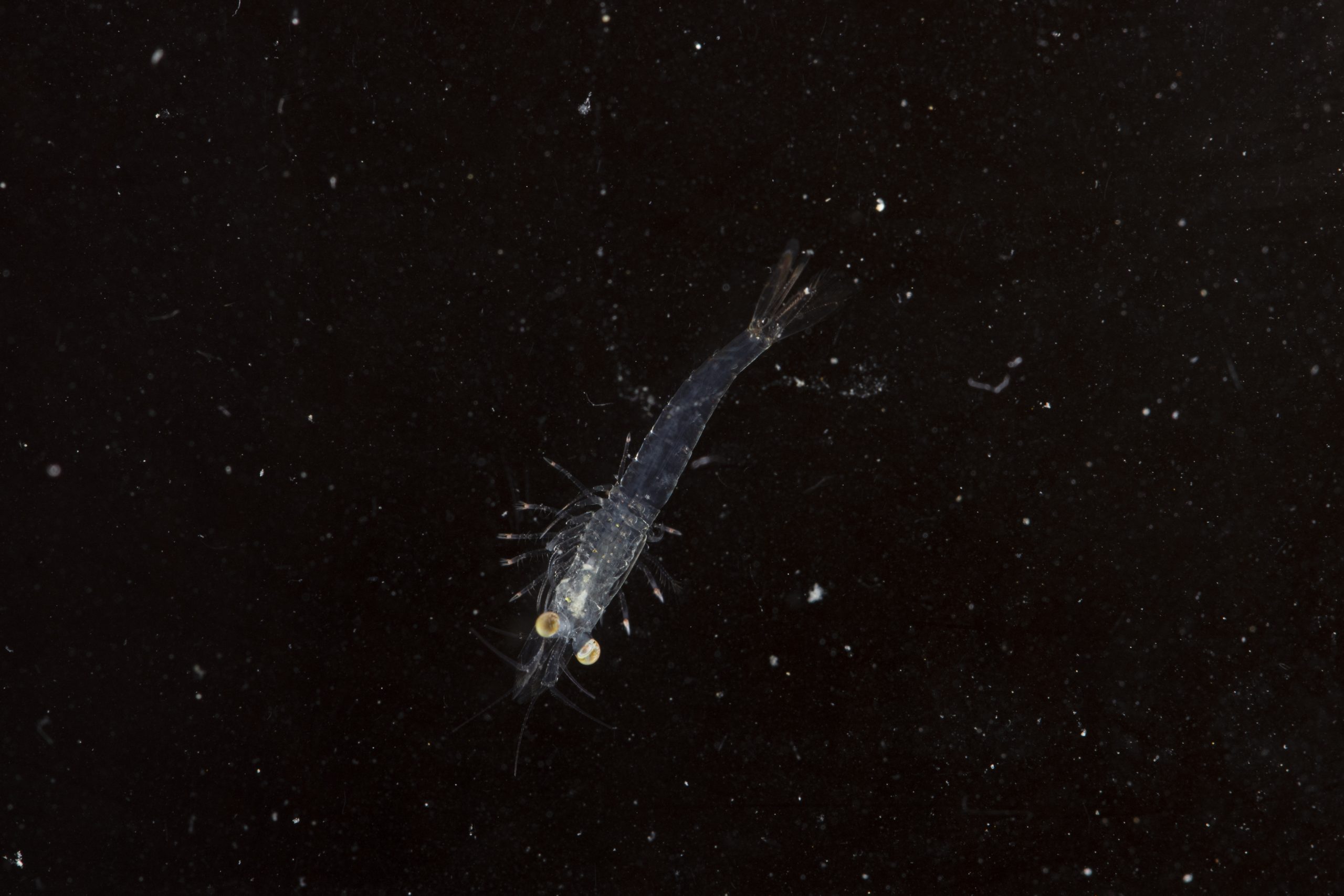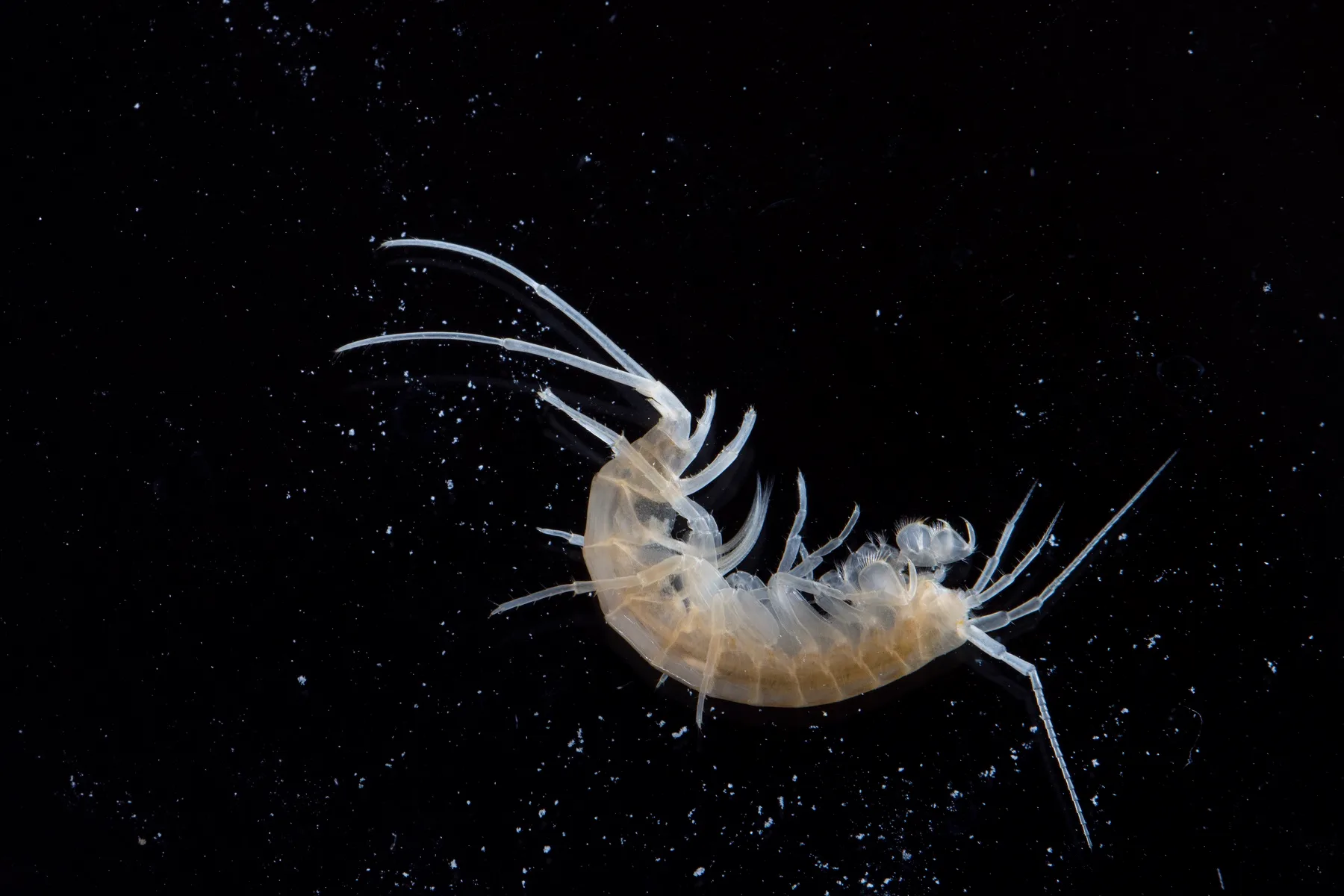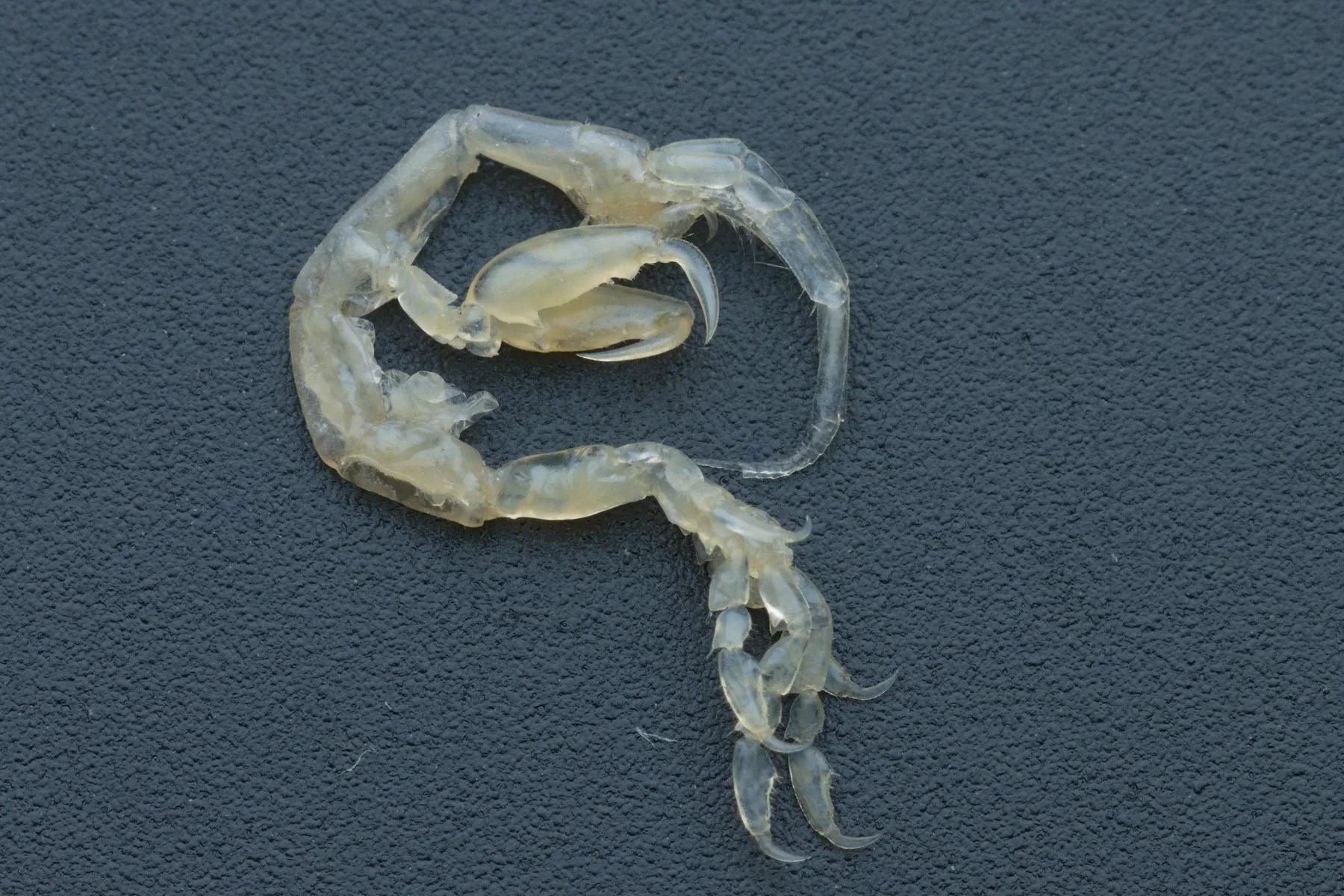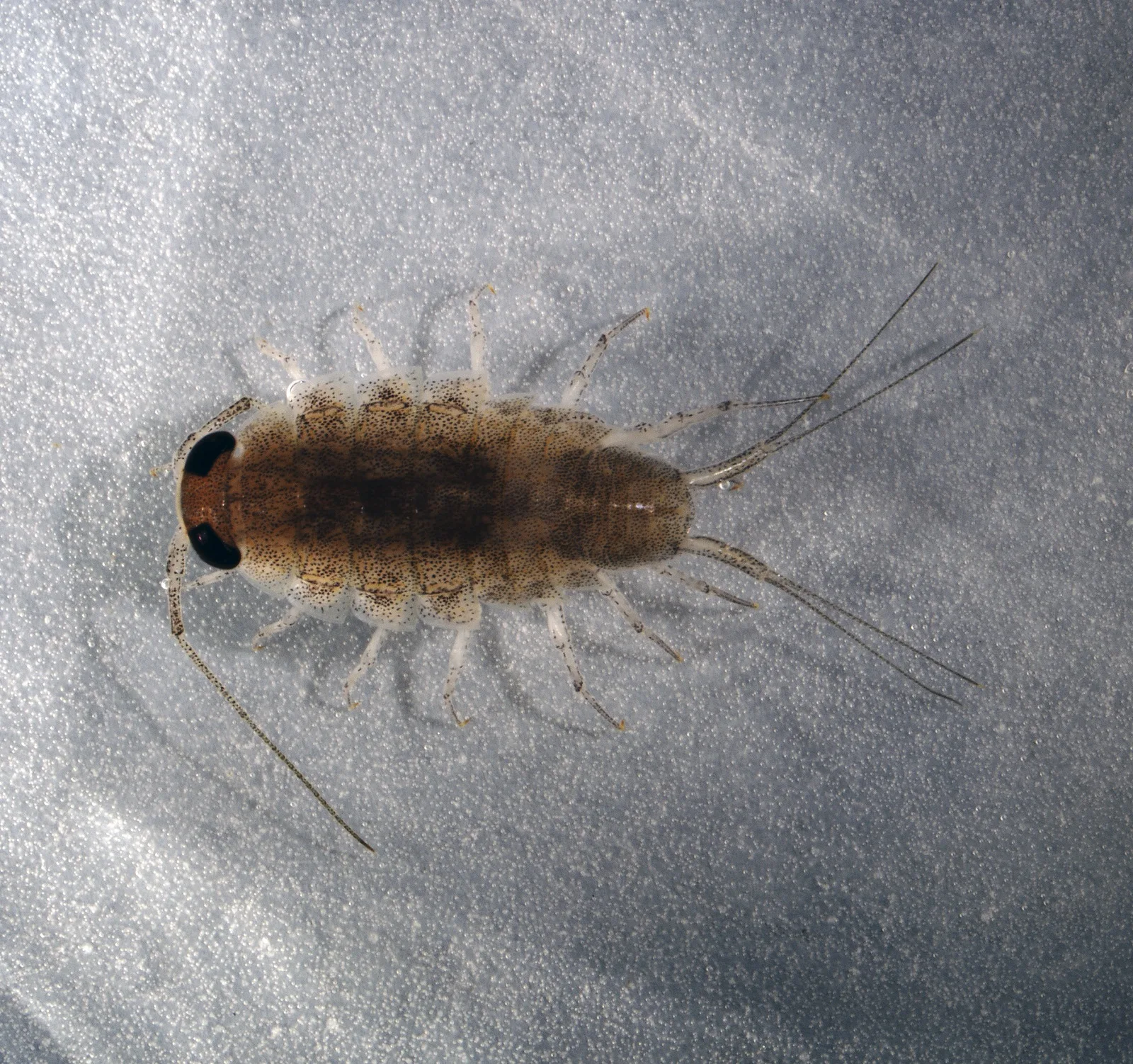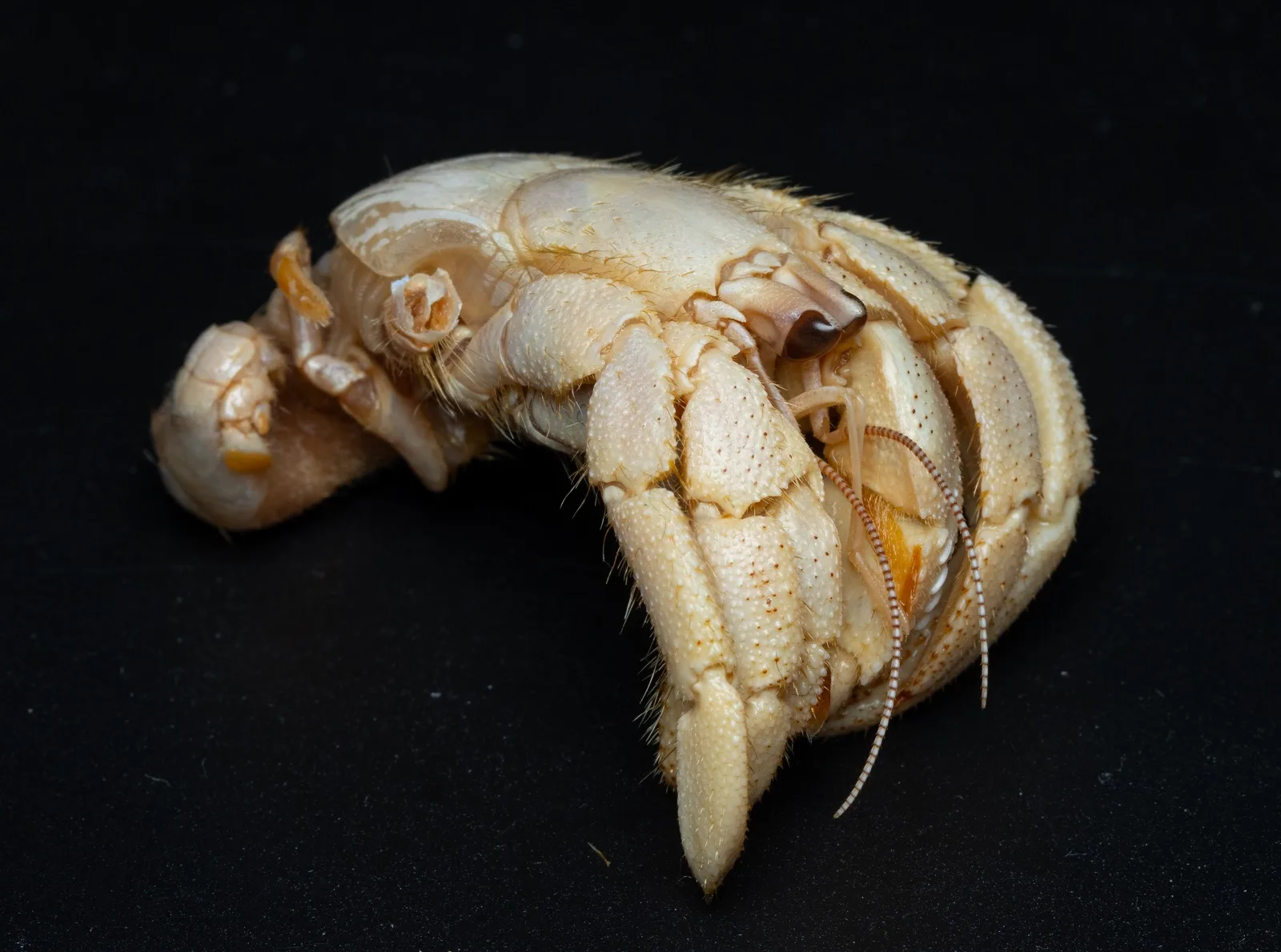- Crustaceans
Alpheidae
Pistol shrimp (Alpheidae) are typical decapods (Decapoda). Their slightly laterally compressed body consists of a cephalothorax, pereon and pleon (abdomen). They reach between 3 and 5 centimeters in length. The cephalothorax and pereon are completely covered with carapace, which originates dorsally and as a rigid shell covers the body. Laterally on each side of the body the carapace encloses a branchial chamber.
The cephalothorax consists of an acron and eight body segments. In the anterior of the cephalothorax the carapace extends into a pointed rostrum on either side of which two stalked compound eyes are located. The cephalothorax bears two pairs of antennae, a pair of mandibulae, a pair of maxillae I, a pair of maxillae II and three pairs of maxillipeds.
The pereon is comprised of five body segments carrying five pairs of appendages termed pereopods. The first pair are chelipeds that distally terminate with chelae. One of the chelipeds is disproportionately large.
Abdomen comprises six segments and terminates with a telson. The abdomen carries biramous pleopods. The flattened last pair of pleopods together with also flattened telson forms a “tail fan”.
Pistol shrimp are marine animals with worldwide distribution. They inhabit crevices and burrows on the seafloor. Often they live in sponges.
They can loudly snap the claw of the large cheliped. As the claw snaps a cavitation bubble is created, which can stun or kill even small fish and other prey. The snap can also produce sonoluminescence. Snapping is used by pistol shrimp also for their communication.
In the West Atlantic eusocial species Synalpheus regalis is present. Up to 300 individuals of this species, all of them offspring of the same reproductive pair, live in the same sponge. There is a division of labor between individuals which all together care for the offspring and protect their sponge that serves as a shelter. In case of danger all individuals can synchronize the snapping of their claws and produce a group defense response against the intruder.
More photos
Related arthropods

Authors
- Urban Bogataj,
- Gregor Bračko,
- Teo Delič,
- Cene Fišer,
- Žiga Fišer,
- Rok Kostanjšek,
- Rudi Verovnik,
- Miloš Vittori,
- Valerija Zakšek.
Students Vito Ham, Vesna Jurjevič, Gaj Kušar, and Adrijan Samuel Stell Pičman also participated in the project.
